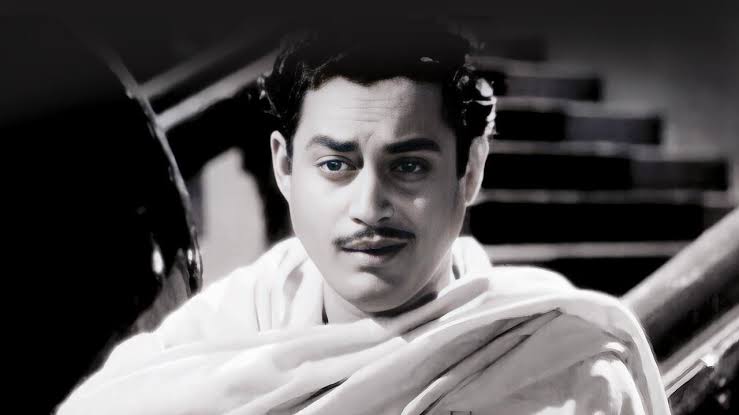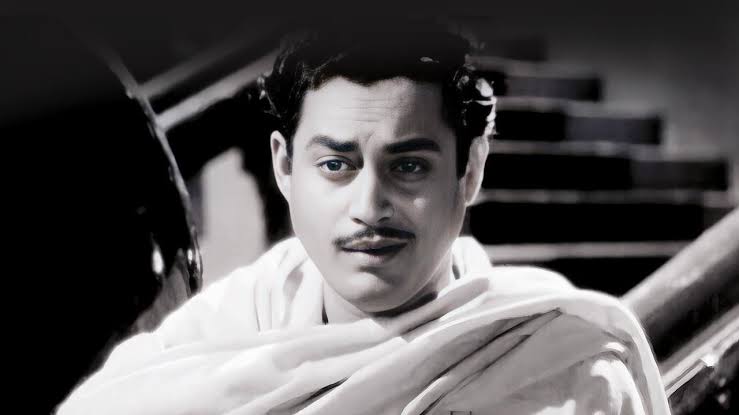Guru Dutt at 100: The Melancholy Maestro Who Lit Up Indian Cinema

On his birth centenary, we remember the timeless genius who blended poetry with the camera, and heartbreak with art.
On July 9, 1925, in the coastal village of Padukone in present-day Karnataka, a child was born who would come to redefine the language of Hindi cinema. Vasanth Kumar Shivashankar Padukone, later known as Guru Dutt, was not just a director, actor, and producer—he was a dreamer, a tragedian, a perfectionist, and perhaps Indian cinema’s most enduring icon of artistic angst.
Today, on his birth centenary, Guru Dutt is celebrated across India and beyond—not merely as a filmmaker but as a cultural phenomenon whose legacy continues to shape the aesthetics and emotional vocabulary of Indian storytelling.
A Life Etched in Shadows and Silhouettes
Born into a Konkani Hindu family, Guru Dutt spent his early years in Bhowanipore, Kolkata, absorbing the city’s Bengali culture and language. His upbringing was enriched by literature, music, and an early brush with performance. A childhood accident and its subsequent superstitious reinterpretation gave him the name that would become synonymous with cinematic lyricism.
After brief and uninspiring stints as a telephone operator and choreographer, Dutt’s destiny found direction at the Prabhat Film Company in Pune, where he met lifelong collaborators like Dev Anand and Rehman. It was here that Dutt’s artistic sensibilities were honed—not just in front of the camera but also behind it, learning direction, choreography, and editing.
The Dev Anand Pact and Baazi’s Gamble
The pivotal moment arrived when Dev Anand, keeping a promise made in youthful camaraderie, offered Dutt the chance to direct his production house’s second film. The result was Baazi (1951), a stylish noir thriller that introduced Bombay’s audiences to a morally ambivalent world of shadows, jazz, and femme fatales.
Baazi wasn’t just a hit—it was a declaration. Here was a filmmaker with a distinct eye and voice, one who could take a popular genre and imbue it with texture and tension. Over the next decade, Guru Dutt created a filmography unmatched in its range and resonance: Jaal, Baaz, Aar Paar, Mr. & Mrs. ’55, C.I.D., and Sailaab—each marked by an evolving language of cinema.
Pyaasa and Kaagaz Ke Phool: Poetry on Celluloid
Then came Pyaasa (1957), the film that would etch Guru Dutt into cinematic immortality. The story of a misunderstood poet, shunned by society and celebrated only after his presumed death, was a thinly veiled cry from the filmmaker’s own soul. With unforgettable music by S.D. Burman, and haunting lyrics by Sahir Ludhianvi, the film became a cultural touchstone.
Two years later, Dutt released Kaagaz Ke Phool (1959), a visually sumptuous, semi-autobiographical tale of a broken director and his doomed love. Shot in exquisite CinemaScope by V.K. Murthy, India’s first such film, it was a commercial failure that devastated Dutt. Ironically, it is now hailed as a masterpiece—an aching meditation on fame, love, and the loneliness of creation.
These two films—Pyaasa and Kaagaz Ke Phool—would eventually be ranked among the greatest films of all time. In the 2002 Sight & Sound poll, Dutt was placed at No. 73 among the world’s greatest directors, with both films earning coveted spots in the top 160 films globally.
Mentorship and Collaboration: A Creative Ecosystem
Guru Dutt was not a solitary genius. He built a team that rivalled any artistic ensemble of his era. He launched the careers of Johnny Walker, a comic icon; Abrar Alvi, his trusted writer and eventual director of Sahib Bibi Aur Ghulam; Waheeda Rehman, his muse and one of Indian cinema’s most graceful presences; and V.K. Murthy, the cinematographer who painted light and shadow with Rembrandtian finesse.
Even when not directing himself, Dutt’s creative imprint was unmistakable. Chaudhvin Ka Chand (1960), directed by M. Sadiq, was a dazzling Urdu romance with the only colour sequence Dutt ever filmed—a testament to his visual curiosity. His final masterpiece, Sahib Bibi Aur Ghulam (1962), directed by Alvi, was a brooding elegy for decaying feudalism, led by Meena Kumari’s unforgettable performance as the lonely Chhoti Bahu.
The Private Abyss: Art Imitating Life
Despite professional success, Guru Dutt’s personal life was fraught with turmoil. His marriage to the celebrated singer Geeta Dutt was marred by discord, exacerbated by his relationship with Waheeda Rehman and his own descent into alcoholism. Friends recall his erratic hours, excessive drinking, and emotional fragility.
On October 10, 1964, Guru Dutt was found dead in his bed—likely from a combination of alcohol and sleeping pills. Whether it was suicide or a tragic accident remains unclear. He was only 39. His final film, Baharen Phir Bhi Aayengi, was completed posthumously with Dharmendra replacing him in the lead.
Legacy Beyond the Frame
In the years following his death, Guru Dutt’s stature only grew. A Doordarshan documentary, Channel 4’s “In Search of Guru Dutt”, and countless retrospectives have kept his memory alive. In 2004, India Post released a stamp in his honour, and film schools continue to study his work as textbook examples of cinematic craft and emotional depth.
Dutt’s influence is palpable even today. Contemporary directors—from Mani Ratnam to Anurag Kashyap—acknowledge his impact. His style—a seamless blend of lyricism, realism, and emotional intensity—foreshadowed the introspective turn Indian cinema would take decades later.
A Light That Burned Brief and Bright
Guru Dutt belongs to that rare pantheon of artists who lived in pain and died young, yet left behind a body of work so rich, so layered, that it transcends the passage of time. He was not a box-office machine, nor a populist entertainer. He was a chronicler of longing, of moral ambiguity, of love and disillusionment.
As we mark a century since his birth, the best way to honour Guru Dutt is not just through tributes, festivals, or films—but by returning to Pyaasa, Kaagaz Ke Phool, and Sahib Bibi Aur Ghulam, and letting them remind us why cinema matters.
In Guru Dutt’s world, every frame was a poem, every silence a sigh, and every heartbreak—an art form. One hundred years later, Guru Dutt remains cinema’s most tragic romantic—a genius whose work still shimmers in chiaroscuro.
(Author, a former member of the history faculty at St. Xavier’s College, is a well-recognised Mumbai-based columnist.)

 1 day, 7 hours ago
1 day, 7 hours ago





[[comment.comment_text]]